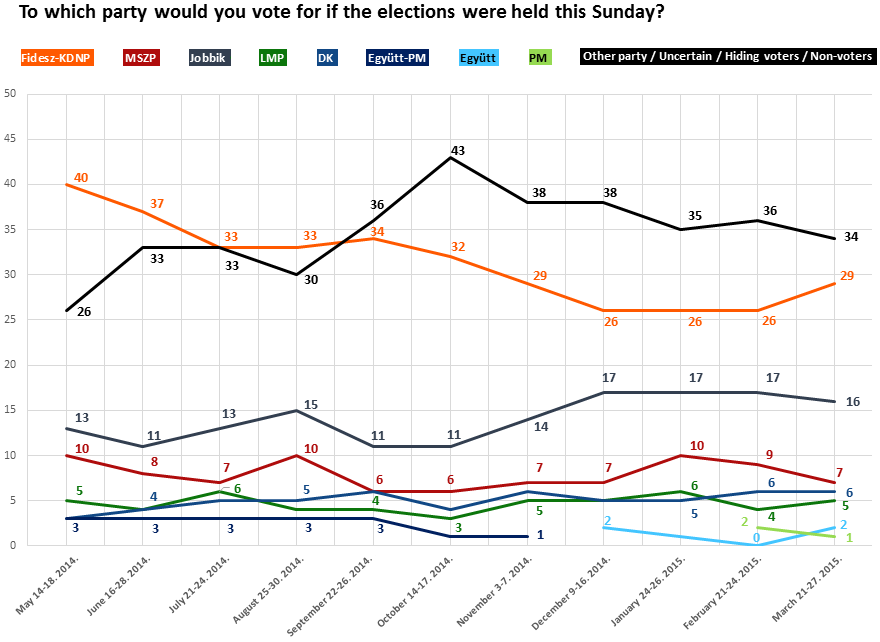The various parties’ support levels have changed only within the margin of error among the total population, what these smaller movements show primarily is that party preferences have remained steady – as Nézőpont Intézet’s public opinion poll conducted between March 21-27, 2015., asking 1000 people by telephone on a representative sample.
Fidesz-KDNP has a 29 percent support level among the total population. Since the end of last year, after a decreasing trend during the Fall of 2014, the governing parties have been supported by a steady 26 percent of the total population. This current fluctuation can actually be a one-time variance since it is within the margin of error of 3 percent. Jobbik’s support among the total population is 16 percent, and by the same measure, MSZP has 7, DK 6, LMP 5 and Együtt 2 percentage points, while PM has only 1 percentage support. Other parties in our survey did not have any measurable support. Hiding voters and non-voters represent 34 percent of the population. Compared to the previous poll, the support levels of the parties have not changed by more than 3 percent, hence these smaller movements indicate that party preference statistics have leveled off.
If we use the potential voting base that is nearest to the prognosticated election results, Fidesz-KDNP has 44 percent support, while Jobbik has 23, DK has 12, MSZP has 10, LMP 7, Együtt 3 and PM 1 percent. There have been no major shifts between potential voting camps, the ratio of potential groups fluctuate to a smaller degree depending on the likelihood of voting participation and/or changing levels of activism and this could still cause some minor deviations compared to the previous poll we conducted.
Party preference statistics among the total population using the potential existing voting base that is nearest in composition to the prognosticated election results
 Party preference trends among the total population (%)
Party preference trends among the total population (%)
Methodology
Nézőpont Intézet’s public opinion survey by telephone between March 21-27, 2015 by asking 1000 people. This is a representative sample based on gender, age, region, settlement type and schooling. In case of these 1000 people samples, the maximum margin of error is 3,2 percent.
Download here.
